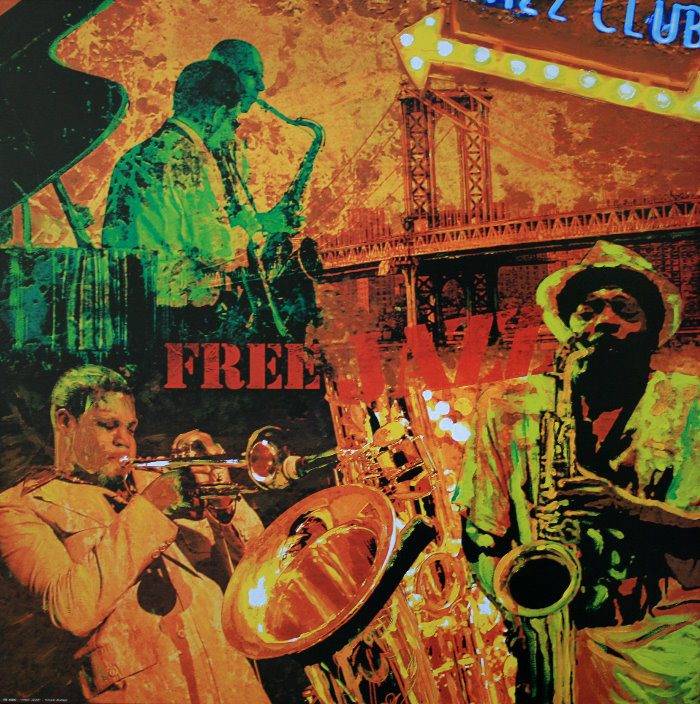Free jazz is a style of music that emerged in the late 1950s and early 1960s as a response to the constraints of traditional jazz structures. It is characterized by a departure from conventional rules of harmony, rhythm, and melody, allowing for greater improvisation and experimentation by the musicians.
Key features of free jazz include:
- Improvisation: Free jazz places a heavy emphasis on improvisation, with musicians often abandoning pre-determined chord progressions and structures. This allows for greater spontaneity and creative expression during performances.
- Extended techniques: Musicians in free jazz often explore unconventional playing techniques on their instruments, such as using extended techniques like multiphonics, overblowing, and unconventional bowing for string instruments.
- Collective improvisation: Instead of having a clear distinction between soloists and accompanists, free jazz often involves all musicians in a group engaging in collective improvisation. This can result in a more egalitarian approach to music-making.
- Use of dissonance: Free jazz often incorporates dissonant harmonies and unconventional scales, challenging traditional notions of consonance and creating a more abstract and experimental sound.
- No fixed forms: Free jazz compositions typically lack fixed structures, allowing for more open-ended and unpredictable musical journeys. This contrasts with the more structured forms found in traditional jazz genres.
Notable musicians associated with free jazz include Ornette Coleman, John Coltrane (particularly his later work), Sun Ra, Albert Ayler, and Archie Shepp, among others. Free jazz has had a significant influence on the development of avant-garde and experimental music in general, extending its impact beyond the jazz genre.


